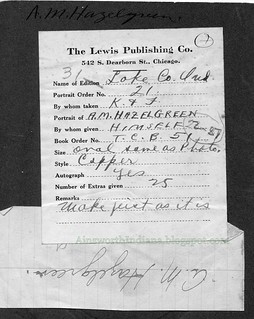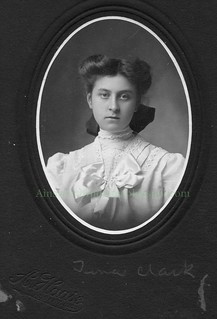Chas. Blank and party of young men from Millers came to Hobart Saturday evening on their new Orient septet, a wheel that carries seven persons. The machine weighs about 200 pounds and is geared to 118. The young men have gotten so they can ride the wheel with perfect success and wherever they go they create quite a sensation."I'll bet they did. I haven't been able to find a picture of the Orient septet, so just imagine this with three more riders:

(Click on image to enlarge)
Image credit: Library of Conress.
Or this, with three fewer riders:

(Click on image to enlarge)
Image credit: http://urbansimplicity.net.
Since the item speaks of "young men," I'm guessing the Charles Blank in question was the 22-year-old Charles A., rather than his 45-year-old father, Charles F. As we learned recently, Elna Hazelgreen's mother, Christina, had been one of the Blanks of Miller. To Elna, this septet-riding youth was Cousin Charles.
Uncle Charles had his own locomotive distinction, which we shall get to in the future.
Sources:
♦ 1900 Census.
♦ Ancestry.com. U.S. Naturalization Record Indexes, 1791-1992 (Indexed in World Archives Project) [database on-line]. Provo, UT, USA: Ancestry.com Operations, Inc., 2010.
♦ Cook County, Illinois, Deaths Index.





















